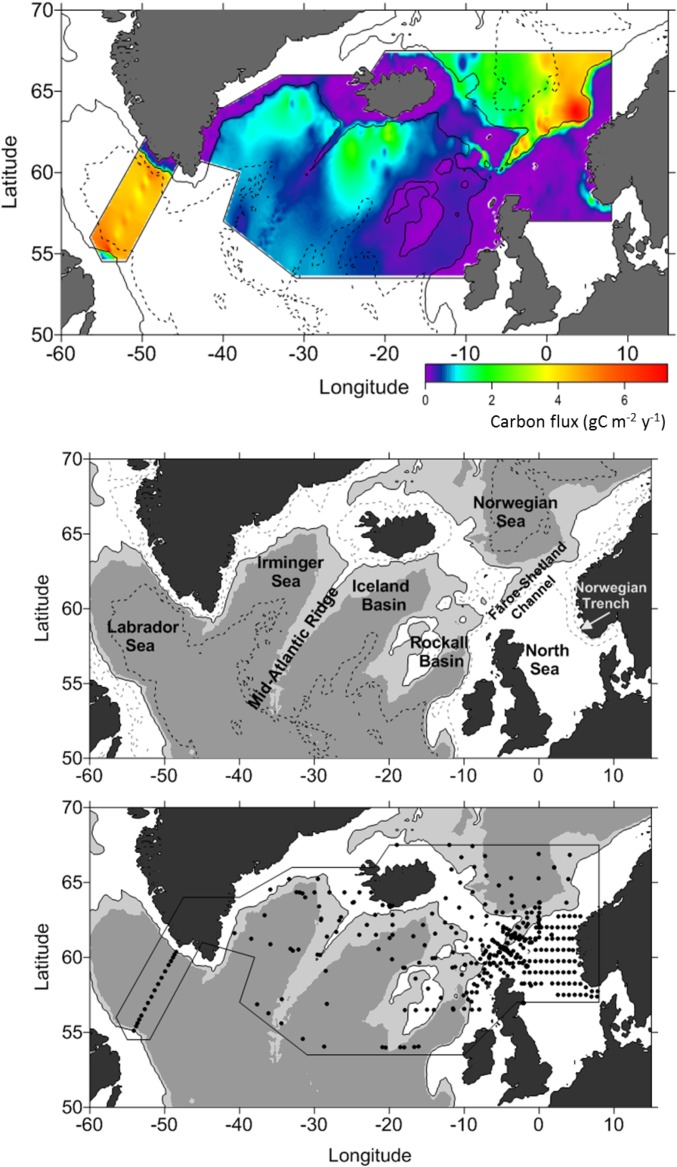Fig. 1.
Lipid sequestrated carbon flux. (Top) A map of carbon flux (in grams of carbon per square meter per year) associated with lipid sequestration (respiration) of overwintering Calanus finmarchicus in the North Atlantic. The carbon flux “hot spots” in the eastern Norwegian Sea is due to the high copepod abundance but in the Labrador Sea due to larger copepod size and higher respiration due to higher temperatures. (Middle) Names of the ocean basins referred to in Table 1. (Bottom) Sampling locations of Calanus finmarchicus during winter for abundance, length, overwintering depths, and temperatures.

